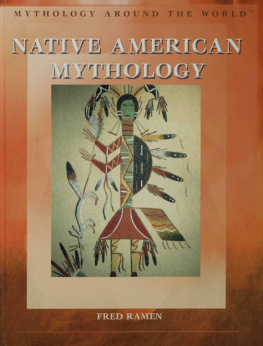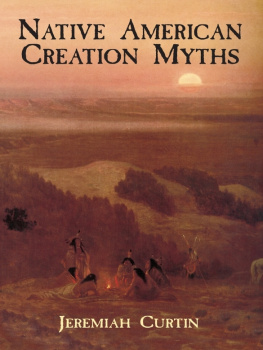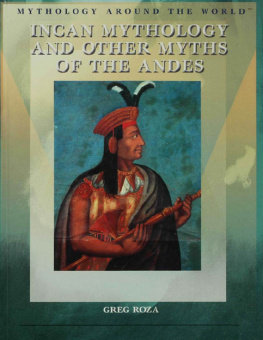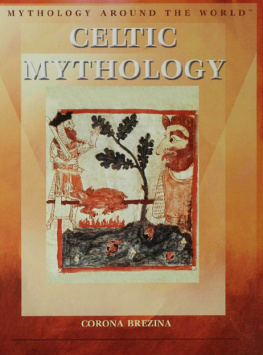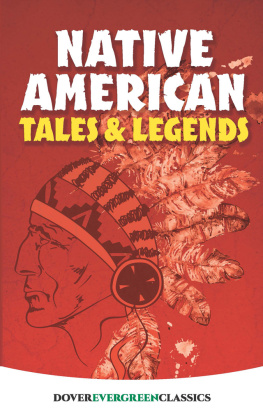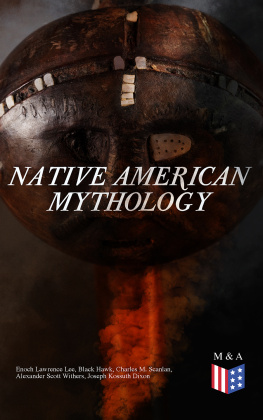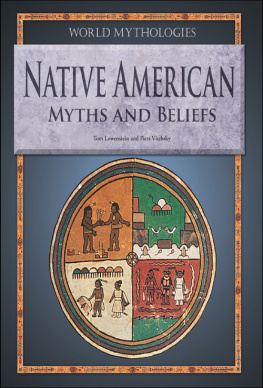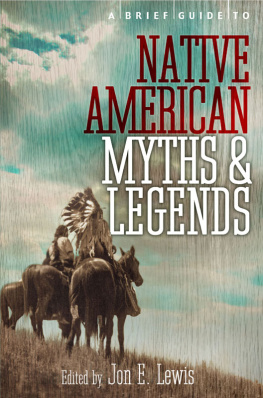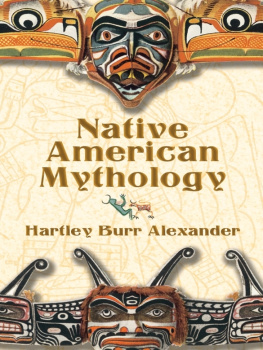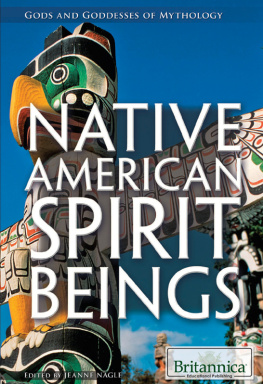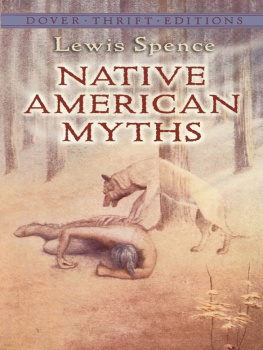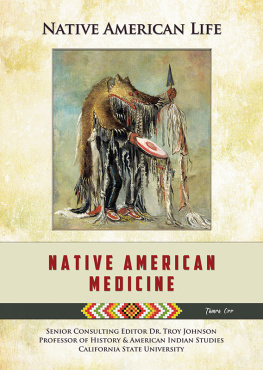Page List

Published in 2008 by The Rosen Publishing Group, Inc.
29 East 21st Street, New York, NY 10010
Copyright 2008 by The Rosen Publishing Group, Inc.
All rights reserved. No part of this book may be reproduced in any form without permission in writing from the publisher, except by a reviewer.
First Edition
Library of Congress Cataloging-in-Publication Data
Ramen, Fred.
Native American mythology / Fred Ramen.1st ed.
p. cm.(Mythology around the world)
Includes bibliographical references and index.
ISBN-13: 978-1-4042-0738-7
ISBN-10: 1-4042-0738-4
1. Indian mythologyNorth America. 2. CreationMythology. 3. TrickstersUnited States. 4. Indians of North AmericaFolklore. 5. TalesNorth America.
I. Title. II. Series.
E98.R3R37 2007
398.4108997dc22
2005035283
Manufactured in the United States of America
On the cover: This Navajo sand painting is of a Yei god, a class of deity in the Navajo pantheon. Sand paintings were traditionally used in healing and blessing ceremonies.
CONTENTS
O ne very cold day a young boy went out hunting with his bow and arrows. He was a good hunter and shot several partridges. He turned back through the woods to bring them to the village, but the snow was very deep and he grew tired. He decided to stop and rest next to a huge stone that resembled a human head.
As he sat next to the stone idly chipping a piece of flint, he heard a deep voice speak suddenly, shaking the trees around him with its power: I will now tell a story.
Who said that? asked the boy.
I am Hahskwahot, said the voice. I am Great Stone. I shall tell a story.
The boy realized that it was the stone itself that was speaking to him!
First leave me one of your birds, the stone said. The boy placed one of his partridges on the rock, and Great Stone began to speak again. It told him a wonderful tale of how the world had begun when Sky Woman fell to earth and the Great Turtle caught her and formed the land. When the story was done, the boy returned to his village and told the people the story he had heard. For a while they forgot the cold of winter and shared the joy of the tale with each other.
The next day the boy returned to Great Stone with another partridge. He gave it to the stone and Hahskwhahot told him another legend. This is how it went for many days; the boy learned about magical animals and strange forest spirits, of great heroes and battles in the sky and on the earth. With each story, he returned home and shared it with his family and the people of the village.
One day, when the boy had become a man, he returned to the stone. I have told you all my stories, said Hahskwhahot. You now have the legends and will pass them to your children. Now that there are stories in the world, more stories will be added. And wherever you go you will be welcomed and fed, as it is right to do to the storyteller. I have spoken.
And so it was that Native American myths came into the world.
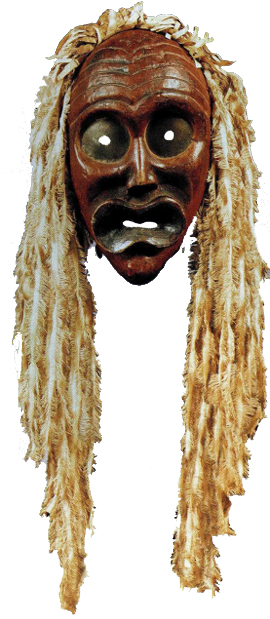
An Iroquois false face mask appears above. These carved wooden masks are used in healing ceremonies and represent mythological beings whose help is requested for curing the sick. They are carved directly into tree trunks and removed from the tree when completed.
This charming Iroquois story is an excellent introduction into the world of Native American mythology. In it we can see many details of how these people told their storiesand more important, how stories like this one were central to their way of life. The story-teller commands respect, and an offering must be given to him as a token of respect. Native American stories are magical in nature and are revealed to humans by spirits of great power. Thus storytelling is not just something to while away time; it is an act of worship that strengthens the bonds of the community.
But before we hear more stories of the Native Americans, we must learn about who these people were, and where and how they lived.
L ike all early inhabitants of North America, the people we call Native Americans arrived from elsewhere in the world. Unlike Americans who arrived in North America from Europe, however, Native Americans migrated from Asia.
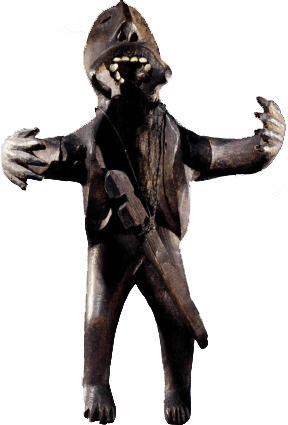
This nineteenth-century doll made of wood, sinew, and teeth by Yupik Indians of Alaska represents a shamans spirit helper. By putting him in contact with the spirit world, the helper enabled the shaman to heal the sick.
Nearly every aspect of the history of Native Americans is intensely controversial, from simple questions about how many were living in North America when the Europeans first arrived, to when the Native Americans themselves first reached the Americas. Most historians agree on the broad outlines of their story, however.
How Many Were There?
The arrival date of the Native American people in North America is not the only controversy about their history. For many years, historians and anthropologists have been arguing about how many Native Americans lived in North America before the coming of the Europeans.
For a long time, it was believed that North America was very sparsely populated at the time of the European discovery. The usual estimate, first calculated at the beginning of the twentieth century, was that there were approximately one million people living on the continent when Christopher Columbus arrived. That number was based on the size and number of Native American tribes observed during the eighteenth and nineteenth centuries.
However, there were problems with this reasoning. The early Spanish invaders in the Caribbean and Mexico reported populations in the millions. For a long time, these numbers were thought to be an exaggeration. However, recent historical research has uncovered evidence that the population of North America may have been much higher than previously thought.
It is well known that diseases, such as smallpox and measles, brought by the Europeans were the biggest killers of Native Americans, who, having never encountered these illnesses before, had no immunity to them. By studying church and government records, researchers determined what percentage of the infected Native American populations usually died, and then compared it to the number of deaths actually recorded. Using this method, they determined that the population of North America was much higherperhaps between 8.5 and 15 million peoplewith millions more in Mexico. The lower populations in the nineteenth century were the result of these massive pandemics that wiped out so many people.
Long ago, during the period we call the Ice Age, the earth was much cooler than it is today. Huge glaciersgreat masses of ice and snowcovered much of present-day Canada and northern Europe. Because ice takes up more space than water, the sea level was lower in those days than it is today. This allowed people from Asia to cross into North America on foot.
Scientists believe that the Bering Straitthe narrow body of water between Alaska and Russiamay have been dry land during the Ice Age. (Some feel that it was not completely dry, but that it had enough small islands that people in tiny boats could cross the water without ever being far from land.) It is not known for certain when the first people came across the land bridge named Beringia; most estimates are between 12,000 to 18,000 years ago. Recent evidence, however controversial, has emerged that may indicate humans reached the Americas as early as 30,000 years ago.

